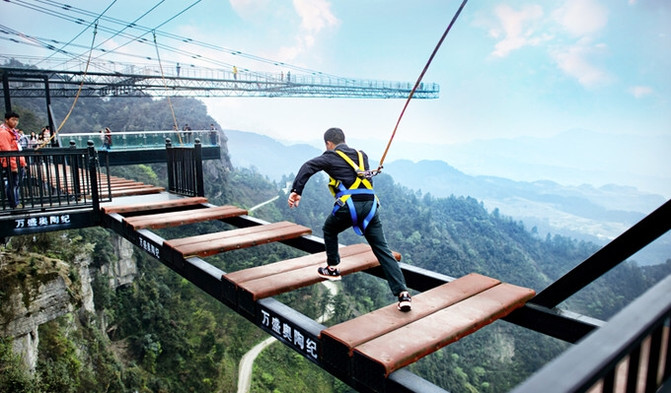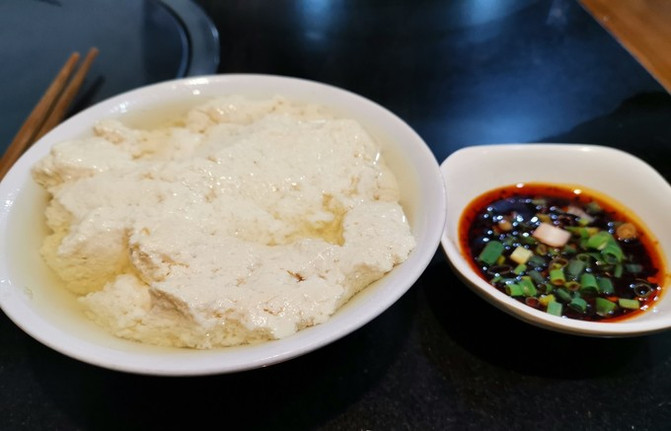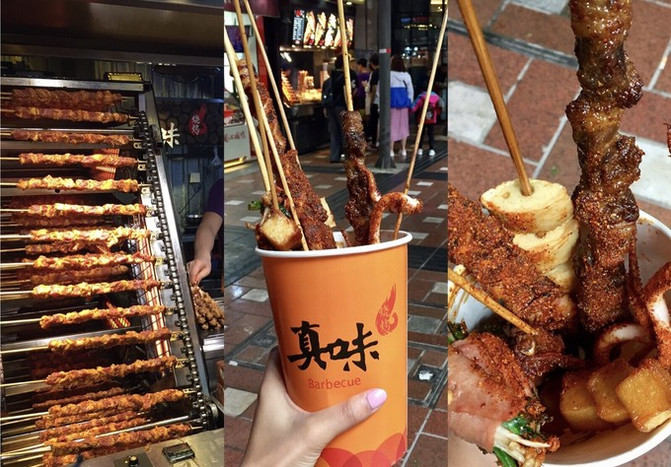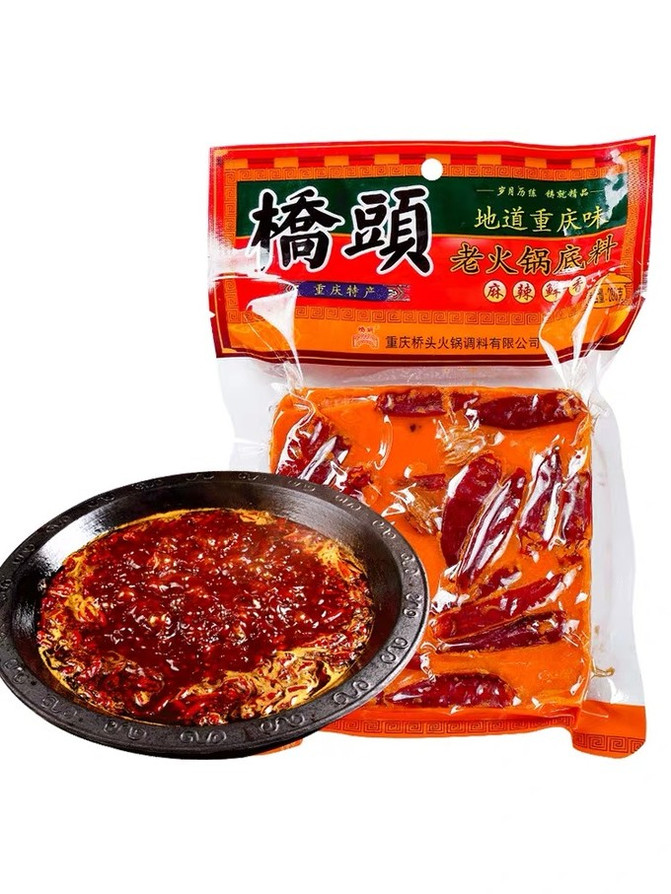Mountain City Chongqing | Food, Accommodation, Transportation, Travel, Shopping, Entertainment and Dry Goods (Part 2)
Around the downtown area of Chongqing, there are also some scenic spots worth visiting, such as Dazu Rock Carvings, the "World Cultural Heritage", Wulong, the world wonder of the filming site of Transformers 4, and the picturesque Three Gorges of the Yangtze River
1. Wulongyuan
Wulong was originally an unknown small town located on the southeastern edge of Chongqing, downstream of the Wujiang River, 170 kilometers away from Chongqing. There are scenic spots such as Tiansheng Sanqiao, Longshui Gorge, Xiannv Mountain, and Impression Wulong.
He first came into the public eye because of a famous director's film, directed by Zhang Yimou and starring Chow Yun fat, Gong Li, and Liu Ye. The 2006 film was called "Curse of the Golden Flower", and his second appearance in the public eye was on June 27, 2014, with the release of "Transformers: Age of Extinction". In "Transformers: Age of Extinction", there are a lot of Chinese elements reflected, not only using Chinese actors such as Li Bingbing, but also shooting in four places in China. However, director Michael Bay only chose Hong Kong and Wu Long to personally shoot, and even appointed Wu Long to shoot the whole process on site. The most shocking scene is Optimus Prime transforming into a Dragon Knight, riding a Tyrannosaurus Rex "Steel Lock" and wielding a sword, which is taken from Wulong. Subsequently, in 2014, Hunan TV's "Where Are We Going, Dad? 2" also chose Wulong as one of its stations. At that time, Huang Lei, Lu Yi, Cao Ge, and Wu Zhenyu spent a wonderful trip with their babies in Wulong, and the recording venue Wulong Tiankeng Village also became popular, attracting many tourists to come here for tourism.


2. Dazu Rock Carvings
"North Dunhuang, South Dazu", even if you have seen Longmen and passed Yungang, Dazu Rock Carvings, as the representative works of ancient Chinese stone carving art, can't be missed. When it comes to China's "grottoes", many people may think of the so-called three major grottoes, namely Mogao Grottoes, Yungang Grottoes, and Longmen Grottoes, and the history of Dazu is not yet known to many people.
Dazu is 95 kilometers away from Chongqing. From the late Tang Dynasty to the Song Dynasty, over 50000 statues were carved here, distributed in more than 70 places within the county. Baoding Mountain, together with Beishan, Zhuanshan, Shimen Mountain, Nanshan and other grottoes, is known as the "Dazu Rock Carvings". Among them, Beishan and Baoding Mountain, with their grand scale, are known as "art treasure houses". As early as 1999, Dazu Rock Carvings had been included in the World Cultural Heritage List, competing with Yungang Grottoes and Longmen Grottoes. The name Dazu originated from Emperor Suzong of the Tang Dynasty, who built it in memory of Empress Wu Zetian. It means "Da Feng Da Zu" and was named Dazu for the purpose of providing ample food and clothing for the whole world.


3. Black Valley
Located in Wansheng District, it is praised by experts as the "Chongqing Guizhou Biological Gene Bank" and is currently the largest and most well preserved natural ecological scenic area in Chongqing.
The most wonderful scenery is the narrow and deep ten mile canyon of Liyu River. Standing in Liyu Canyon, one hand can touch the mountains of Chongqing, and the other hand can touch the mountains of Guizhou. Here, the mountains are high and the forests are dense, making it a natural oxygen bar. The temperature in summer is also lower than in the city, so you can feel the shade of the canyon and the fun of playing in the water during the hot summer. The secluded gorge, forest, waterfalls, caves, and rare flora and fauna are excellent destinations for canyon crossing, drifting sightseeing, rock climbing exploration, camping, fishing, and hunting.

4. Ordovician period
There is also a popular tourist attraction called the Ordovician period, which has become synonymous with excitement and thrills. Here are a few must play items about the Ordovician period: the first is the Sky Hanging Corridor, the second is the popular "21 meter Cliff Swing", the third is the 360 ° Hammer, and the fourth is the Cliff Jumping Machine.

04. About diet
Chongqing cuisine belongs to the Sichuan cuisine series and is one of the eight major cuisines in China. It has always enjoyed the reputation of "one dish, one style, one hundred dishes, one hundred places" and has a long history. According to historical records, Sichuan cuisine originated from the ancient states of Ba and Shu, characterized by a diverse range of flavors. Pepper, pepper, Chinese prickly ash, bean paste, etc. are the main condiments. With different ratios, various flavors such as spicy, hot and sour, pepper, sesame paste, garlic puree, mustard, red oil, sweet and sour, fish flavor, and strange taste are produced, all of which are thick and mellow. All kinds of dishes are popular. The flagship dish of Chongqing cuisine is undoubtedly hotpot, originally created by boatmen and boatmen to cope with the cold and trendy winter. Why is Chongqing hotpot delicious?


The unique base material of the recipe is the key to measuring the deliciousness of hot pot. Authentic old hot pot is known for its rich flavor and heavy oil. The traditional soup is made from Pixian spicy bean paste, Yongchuan fermented black beans, Ganzi butter, and Hanyuan Sichuan peppercorns as raw materials. The spices can also be added according to personal taste preferences, such as fragrant leaves, star anise, cloves, sand kernels, white currants, coriander seeds, cinnamon, licorice, spirit grass, sannai, fragrant fruit, etc. First, put the butter into a pot with high heat and simmer it. Then chop the Douban and pour it in until it becomes sauce red oil. Then add Sichuan peppercorns and various spices and stir fry quickly. At this time, be sure not to stir fry it. Then add the beef broth, add fermented black beans, crushed rock sugar, ginger, Sichuan salt, fermented glutinous rice, and chili peppers to make it. A large pot of hot broth is ready. Some hot pot restaurants are bustling with customers, while others are deserted, all because of the ingredients in this pot.


An oil dish is a must-have. Simply put, an oil dish is a seasoning bowl, similar to how sesame sauce is used to mix boiled lamb in the north. It usually consists of half a bowl of sesame oil and a small spoonful of garlic, with salt and MSG added. Nowadays, you can also add cooked chili peppers, Sichuan peppercorns, sesame seeds, peas, scallions, cilantro, and more according to personal preferences. The vast majority of Chengdu people add oyster sauce to their oil plates to enhance their freshness, but authentic Chongqing cuisine tends to prefer a simple combination of garlic and sesame oil. Why dip the hotpot dish in oil? There are three reasons: firstly, it allows the food to cool down to prevent burns; Secondly, one can absorb the rich aroma of sesame oil, which makes the food more flavorful and has a better taste; Sanlai hotpot is a type of food that tends to be hot and dry, while sesame oil has the function of clearing heat. After passing through the oil dish, its cooling effect can have the effect of clearing heat.

There are a variety of dishes, with traditional hotpot featuring beef tripe as the main course. Almost all dishes are made from beef liver, heart, tongue, sliced pork belly, blood and lotus white, garlic sprouts, scallions, pea tips, and other vegetarian dishes. Nowadays, the menu has expanded to include poultry, seafood, wild game, animal offal, various vegetables, and dried and fresh mushrooms and fruits. The top ten favorite hot pot dishes selected by Chongqing netizens are: tripe, duck intestine, yellow throat, spicy beef, braised fish, sliced pork, shiitake mushrooms, potatoes, lotus root, and sweet potato skin. The dishes such as fried crispy meat are popular with netizens all over the world. The way of eating now or cooking in the pan is very popular. After dinner, they will be paired with various Dim sum, such as pumpkin cakes, gold and silver Mantou, Indian flying cakes, etc., which are dazzling.

The bold and unrestrained way of eating hotpot in Chongqing is unparalleled compared to other regions in terms of its grandeur and grandeur, making it a unique culinary style. In the old fire pot restaurant of the past, there were specially designed tall tables and chairs, with iron and copper pots and blazing charcoal fires. The soup in the pot rolled over, and diners looked down at the dishes in the pot, raising their glasses and waving their chopsticks. Especially in the scorching summer, sweating profusely in the smoky fire, taking off one's shirt and going shirtless when eating vigorously. This is precisely the embodiment of the Ba Yu food culture, as well as the manifestation of the ancient Ba ethnic group's brave and bold personality and food culture psychology. Nowadays, in Chongqing's hotpot restaurants, whether it's a gathering with family and friends or a date with a lover, locals who have already deeply loved hotpot will never care about their appearance when eating hotpot in the restaurant. It's an extremely happy thing to sweat while eating hotpot in summer. Many hot pot restaurants operate until late at night, allowing hungry diners to confidently start searching for delicious food.



Featured snacks, Chongqing is a big place, and there are many kinds of snacks. The more famous ones are Chongqing noodles, hot and sour noodles, Wonton, tofu pudding, Ciba and rice dumpling, which are common local snacks in life. Those who like food must not miss them.



05. Local specialties
Chongqing specialties are closely related to food. Most people will also choose snacks that are convenient and easy to take, such as Ciqikou Fried Dough Twists, Hechuan Peach Slices, Zhangfei Beef, Pickled Pepper Chicken Feet, and Weiwei Beans. You can take them home to taste, or you can choose them and send them to your relatives and friends in beautiful packaging. If you don't have enough hot pot in Chongqing, you can also take some hot pot ingredients to bring Chongqing flavor home. Besides, Chongqing tea, fruit, etc. are also quite famous and of high quality



06 About Local Must See Performances
1. Night Tour of Two Rivers
Taking a boat tour of the Yangtze River and Jialing River at Chaotianmen Port is a classic activity for enjoying the night scenery of Chongqing. Riding a cruise ship allows for a 360 degree panoramic view of the city of mountains and waters. The ship sailed slowly, and it was pleasant to enjoy the breeze on the scorching summer night. However, it is still advisable to prepare more clothes at other times, and be sure to keep warm in winter.
There are two types of cruise ships: luxury and ordinary, with and without meals (both on the same boat, with meals included when enjoying the scenery). The overall price difference between the two is 30-60 yuan, but in fact, there is not much difference between the two for sightseeing. If you want a simple experience, just choose an ordinary boat.
The general route is from Chaotianmen Wharf to Jialing River Bridge, and then ship to Chaotianmen Wharf on the Yangtze River to the Yangtze River Bridge, surrounding Yuzhong Peninsula, where you will enjoy Hongya Cave, Grand Theater, Monument to the people's Liberation, etc

02. Impression of Wulong
Impression Wulong is the only large-scale live performance in Chongqing that showcases the magnificent geographical landscape and historical culture of the Bashu region. Throughout the performance, it combines disappearing folk forms such as "haozi" and "crying for marriage" with the most distinctive cultural elements of Chongqing, such as "bang bang er" and "spicy hot pot", allowing you to experience the charm of Bashu's customs and culture. As one of the seven "Impressions" films in China, "Impression: Wu Long" is directed by Zhang Yimou, the "Iron Triangle" artist, and directed by Wang Chaoge and Fan Yue.
Not long ago, "Extreme Challenge 5" also came here to participate in performances. Luo Zhixiang, Zhang Yixing, Dilraba Dilraba, Yue Yunpeng, Lei Jiayin, and Wang Xun participated as extras and boatmen in normal performances. The audience sat on open-air seats, and for 70 minutes, the projectors of the entire venue interlaced the images, as well as the full acting skills of the performers, automatically transported the audience into that era - the hunched backs of the boatman on the canyon and dangerous shoals, and the loud and high pitched "horns" lingering in their ears. They could feel the simple atmosphere of the pavement and the vicissitudes of time, making it a very watchable and valuable performance! There are three types of ticket prices for the performance, regular tickets and premium tickets, with prices of 200 yuan and 300 yuan respectively. Different ticket prices correspond to different viewing positions.

Best travel time
March to May and September to October are the best travel times in Chongqing.
From March to May and from September to October, due to Chongqing's subtropical monsoon humid climate, these two periods are the spring and autumn seasons in Chongqing, with the most comfortable temperatures, neither too hot nor too cold.
From November to February, Chongqing enters winter and the rainy season begins. The climate is humid and cold, but it is suitable for eating hotpot and soaking in hot springs. At this time, it is also the off-season in Chongqing, and most scenic spots offer off-season tickets. On Christmas Day and the New Year's Eve, many people will gather at Monument to the people's Liberation in Chongqing to listen to the bell ringing on Monument to the people's Liberation. There are more lanterns and decorations around. There are also plenty of discount promotions in major shopping malls.
June to August is the scorching summer season in Chongqing, as hot as a furnace city, with the highest temperature reaching 40 ℃; But locals prefer to eat hotpot in summer, and sweating with chopsticks is the most enjoyable. And during this period, the fog is relatively light, making the night view the clearest. Wulong, Jinfoshan and other places around Chongqing have also experienced a 10% increase in housing prices due to the influx of summer heat seekers, so it is best to book a room in advance.
Chongqing Tourist Scenic Area Direct Train
Chongqing is one of the cities where the direct train to the Qilin Scenic Area has been opened (currently, many cities across the country are using it, which is super convenient)
The through bus stops in Chongqing are mainly concentrated in Monument to the people's Liberation, with one stop direct access to various scenic spots. The scenic spots basically cover the well-known scenic spots in Chongqing, including Ciqikou, Hongya Cave, Wulong, Dazu Rock Carvings, Heishan Valley, etc. After arriving at the destination, you can travel freely throughout the whole journey without shopping malls or hidden consumption. Set a designated time for the return trip, equipped with a driving assistant on board to provide you with high-quality explanation services. The price is relatively cheap, for example, the cost of a one-day round trip to Wulong is around 110 yuan!

Previous Article:Chongqing - Encountering a Hotel Tour
Next Article:Sky City (Part 2): With the cloud as its core, walking through the beauty of Yuzhong for three thousand years
